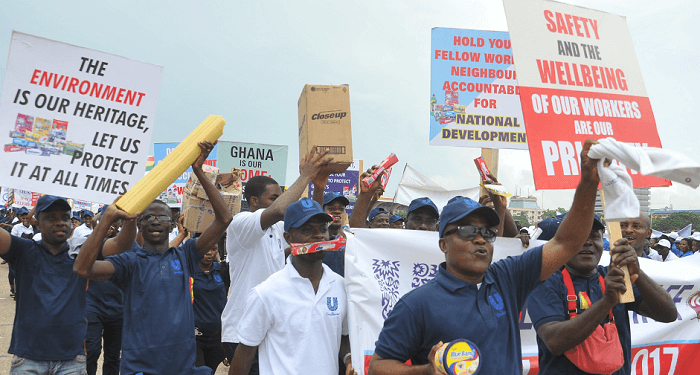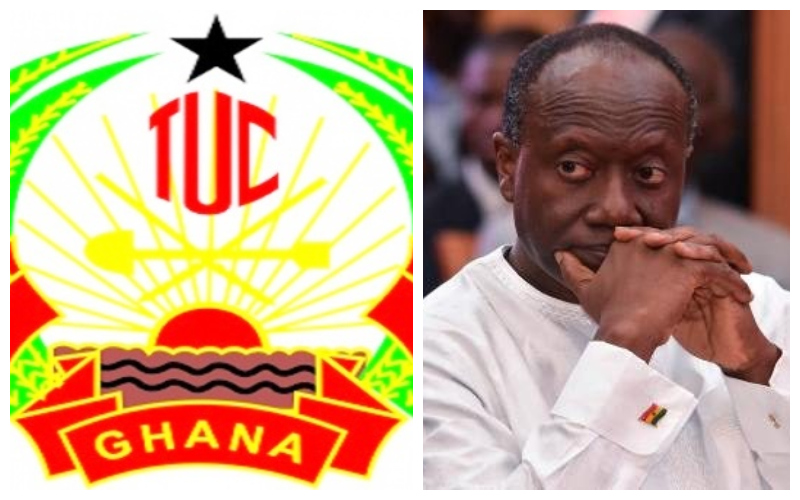In recent years, May Day has become known as Labour Day, Workers Day or International Workers Day.
A labour festival, marked predominantly with rallies and durbars, is held to honour the military and industrial efforts of workers in various countries.
In Ghana, everyone knows that May 1 is a statutory public holiday. Many people are also aware that it is a workers day that is annually commemorated with march pasts by various workers groups in all regional capitals.
However, what is shrouded in mystery is how the marking of the day as a Workers Day came about. We get all the answers from History.
May Day Celebration was originally a celebration of spring and the rebirth taking place in nature during that time of the year. It was characterised by the gathering of flowers and the fertility rite of dancing around the maypole (tree or decorated pole).
It is different from the distress call by vessels stranded at sea. It was inspired by the ancient Roman festival of flowers and Greek festivals such as the Anthesteria.
In Hawaii, for instance, May Day is known as Lei Day to celebrate the island’s culture, while in the United Kingdom, May Day is still celebrated in many towns with the crowning of the May Queen.
The people of Oxford uphold traditions during May Day celebrations and start with the choir of Magdalen College singing from the top of the chapel tower. In Mexico, the celebration is referred to as Primero de Mayo, and is a national holiday that honours workers.
The first May Day Celebration
The first May Day was marked on May 1, 1890 after its proclamation by the first international congress of socialist parties in Europe on July 14, 1889 in Paris, France. Since then May 1 every year is dedicated as a the “Workers Day of International Unity and Solidarity.”
The day was not chosen out of the blue. The day finally settled on came with the ultimate price – the sacrifice of human lives
The Haymarket Square in Chicago City, United States of America (USA), became the altar for the sacrifice when violence erupted on May 4, 1886, after police fired on striking workers who from May 1 were demanding a legal guarantee for an eight-hour working day and a desired minimum wage.
The disturbance resulted in the killing of eight armed police and other people. After which this, four ringleaders; August Spies, George Engel, Adolf Fischer and Albert Richard Parson, were arrested, convicted and hanged on November 11, 1887.
Others, like Oscar W. Reebe and Michael Scwab, were sentenced to life imprisonment.
The Haymarket Square martyrs were later honoured with a special monument at their graveside in Chicago, which was dedicated on June 25, 1893.
The following day, on June 26, 1893, the Governor of Illinois, USA, overruled the earlier court judgement of life sentence for the remaining surviving striking leaders in jail and freed them.
This resulted in the American Federation of Labour (AFL) eventually petitioning and obtaining their desired minimum wage and an eight-hour working day in February 1889.
This was later incorporated into an international Agreement on Safety at Workplaces held at the Bordeaux Congress and the automatic adoption by the French Trade Unions and other institutions.
Thereafter, the workers revolt spread like wild fire to many European countries, culminating in the convening of the first international Congress of Socialist Parties in Paris, France, on July 14, 1889. This gave birth to the celebration of the international solidarity workers day that has become a celebrated tradition for workers movements throughout the world.
The day is used to articulate labour concerns to the government, while the government has used the platform to assure the working class of its commitment to their welfare.
When Ghana joined
In those days, however, most African countries were colonies of various European powers, especially Britain, France, Spain and Portugal, with the exception of Ethiopia, Liberia, Egypt and others which were not colonised.
Ghanaian workers observed their first May Day in 1960, three years after the country gained independence, and Ghana’s first President, Osagyefo Dr Kwame Nkrumah, was declared the “First Number One Worker” and decorated with a May Day Award by the Trades Union Congress (TUC), under the leadership of the Union’s Secretary-General, Mr J. K. Tettegah.
The May Day celebration was suspended in the wake of the first military coup which toppled Dr Nkrumah’s Convention People’s Party (CPP) Government on February 24, 1966.
The celebration was resumed a year later in 1967 and after the January 13, 1972 military coup led by General Ignatius Kutu Acheampong. The event was marked with a grand national parade at the forecourt of the Accra Community Centre.
The parade was attended by hundreds of workers from the Accra-Tema Metropolitan Area and saw the formal institutionalisation of May Day awards to selected dedicated workers of the TUC, then led by Secretary-General Alhaji A.M. Issiful.
Source: Graphic Online









